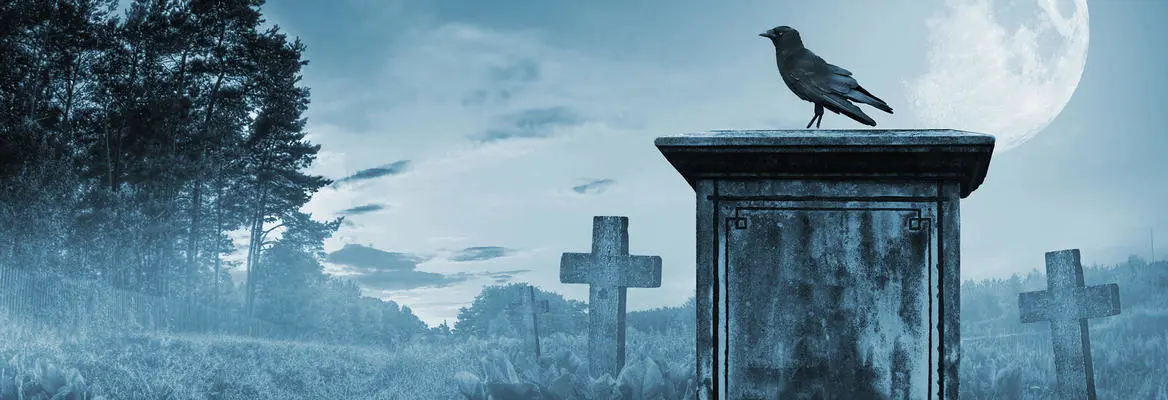Both Poe and Kierkegaard were preoccupied with death, denial and fear - worries never more prescient than during the Covid-19 pandemic. Unlike the philosopher, the poet projected his obsessions into a world of stories filled with agnosticism and uncertainty.
In 1832, five months before an Asiatic cholera pandemic reached the United States, Edgar Allan Poe started publishing magazine tales. That summer, the disease killed 3,700 people in Baltimore, where Poe was living, and in two early tales, “Shadow” and “King Pest,” he projected that crisis onto remote, Old World settings. Not until 1842, however, did he fully capture its horror in “The Masque of the Red Death.” Set in Europe, the tale depicts an arrogant ruler’s response to contagion. After his realm has been “half depopulated,” Prince Prospero belatedly invites a thousand “hale and light-hearted friends” to a Gothic abbey and then bolts shut the gates. Five or six months into the quarantine, “while the pestilence raged most furiously abroad,” Prospero defiantly stages a masked ball. But the soirée ends badly. Poe concludes: “Darkness and Decay and the Red Death held illimitable dominion over all.” He implies that while we may temporarily escape a certain kind of death, we cannot avoid dying.
For many, the most frightening aspect of the coronavirus pandemic has been the collapse of our illusions of personal safety. COVID-19 has created shocking scenes, and its complexities have confounded medical experts. Both highly contagious and extremely fatal, the virus and its multiple, dire symptoms have been as puzzling as its insidious transmission by asymptomatic carriers. Factoring in underlying health issues, researchers still cannot explain why some cases remain mild while others spiral from slight discomfort to respiratory failure.
The social upheaval seems equally unreal. In the United States, armed protesters—incited by the President—are rejecting surgical masks and mitigation strategies. They demand the “freedom” to restart the economy, whatever the consequences. Understandably, many wish to return to work. We also long to resume old pastimes—like sporting events—by which (as Kierkegaard remarked) we tranquillize ourselves with the trivial.
Poe was — with the possible exception of Kierkegaard himself — the most deeply preoccupied with mortality, existential dread, and its spiritual corollary, despair.
Prospero’s masked ball, inspired by raging pestilence, illustrates this truth about our species: most people most of the time strive to deny an implacable fact—their own mortality. As Ernest Becker observes in The Denial of Death (1973), “The final terror of self-consciousness is the knowledge of one’s own death, which is the peculiar sentence on man alone in the animal kingdom. This is the meaning of the Garden of Eden myth and the rediscovery of modern psychology: that death is man’s peculiar and greatest anxiety”. Yet as Becker also notes, most human pursuits, especially our most cherished achievements, represent symbolic denial.
“The Masque of the Red Death” exemplifies Poe’s powerful yet perverse attraction for contemporary readers. The perverseness lies in his intractable fascination with death. For among his nineteenth-century contemporaries, Poe was—with the possible exception of Kierkegaard himself—the most deeply preoccupied with mortality, existential dread, and its spiritual corollary, despair. To say that Poe and Kierkegaard were both alive to death is to recognize how they explored, in different forms and registers, the linked problems of fear and denial already afflicting nominally Christian bourgeois culture. Poe devoted his fiction to the subject he embraced (in a preface to his first book) as his legitimate field of study: terror. He traced that terror to the soul and regarded it as a sickness unto death. Fittingly, Kierkegaard’s great work by that title appeared in 1849, the year Poe died.















Join the conversation